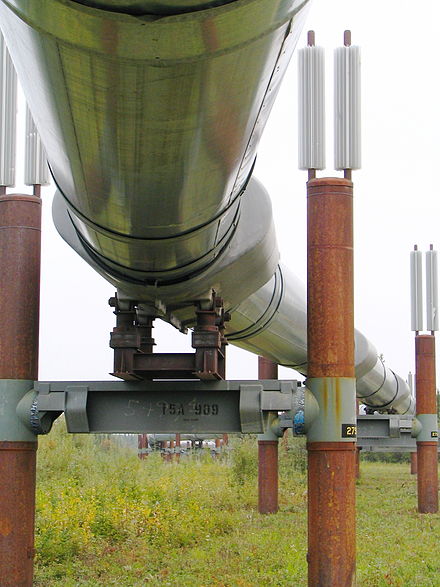Equipment for the control of steel pipelines in service
- Details
- Category: Technological offers
-
18 Dec 2023
At the CENIM-CSIC, scientists have developed a system that makes it possible to evaluate in situ and in a non-destructive manner the longitudinal welds in steel pipes, which are made by high-frequency induction heating or resistance heating, such as those used in gas pipelines and oil pipelines.

Longitudinal welds in steel pipes, which are between 50 and 100 microns in width and run longitudinally through the pipe, are one of the vulnerable points in the infrastructure. In the case of gas or oil pipelines, it is crucial to ensure their integrity.
Normally, the inspection of these pipelines is done in a laboratory, which implies having to fragment a piece of the pipeline and take it for analysis. This would be unthinkable in the case of in-service pipelines. In this case, periodic inspection is done using PIGS systems (Pipeline Integrity Gauges), devices that travel inside the pipe and detect defects using technologies such as magnetic flux leakage or ultrasound.
However, the use of PIGS is limited to large diameter pipes without tight bends in their path. Furthermore, such systems do not allow the determination of weld line tenacity. The tenacity or toughness is a parameter that determines the strength of the weld line and that cracks do not propagate. It is a crucial parameter for predicting pipeline integrity. Alternative methods have recently been developed, but they often require the use of finite element simulations and additional adjustments for each pipeline.
The system developed by researchers at the Centro Nacional de Investigaciones Metalúrgicas (CENIM-CSIC) enables the non-destructive evaluation of the tenacity of the weld line in pipelines of this type. The equipment, through image analysis, categorizes the tenacity of a pipe by comparing it with a safety value. It determines with great precision the probability of a catastrophic failure. This compact system can be transported to the site where the pipe is installed for measurements.
"It is a different approach to existing methods," says Ricardo Fernández Serrano, a CENIM-CSIC researcher who led the study. "It makes it possible to avoid mechanical tests in the laboratory and to anticipate possible failures". As the scientist explains, every time an intervention is made on a material, as in the case of welding, the microstructure of the material is being modified, which can affect its integrity and have subsequent effects. These modifications leave a 'trace' that can be visible through the image analysis proposed by these researchers.
For pipe manufacturers, such a method allows them to ensure that welding and pipe manufacturing is being carried out correctly. It would be "a plus to guarantee the good quality of the manufactured product, easier to implement than laboratory analysis," explains Fernández Serrano.
For distribution companies, it is a low-cost system for inspecting gas pipelines, oil pipelines and similar. It is a compact, portable system, ready for Industry 4.0 / 5.0, and it is easy to use, without the intervention of expert personnel.
The researchers are currently working to make the equipment more automated, so that reading the data is even easier for non-specialists. They are also looking at extending the technology to other applications, such as metal moulds used in the production of components in industry that are subjected to very extreme conditions, or similar.
Contact:
Dra. Patricia Thomas
Deputy Vicepresidency
of Innovation and Transferenca - CSIC
Tel.: 91 568 18 25
Correo-e: This email address is being protected from spambots. You need JavaScript enabled to view it.
This email address is being protected from spambots. You need JavaScript enabled to view it.




